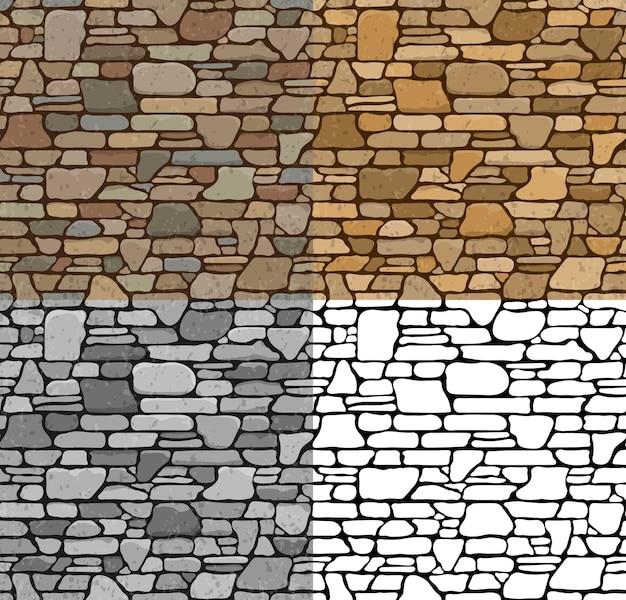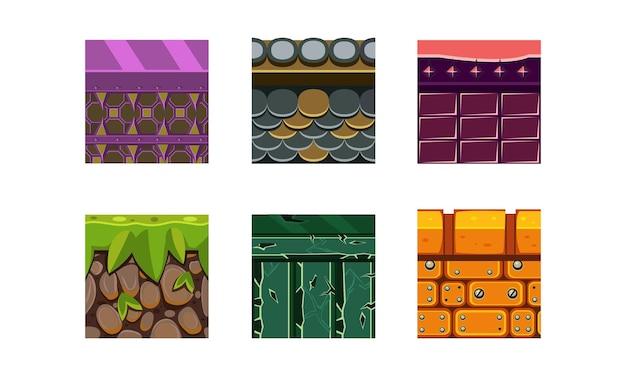Art has always been a medium of expression, captivating our senses and emotions through a myriad of elements. One such element that adds depth and complexity to artwork is texture. Texture refers to the surface quality of a piece, the way it feels to the touch and the visual impression it gives. It has the power to evoke a range of emotions, create visual interest, and engage the viewer on a sensory level.
In this blog post, we will delve into the world of texture in art, exploring its definition, significance, and the four main types of texture artists employ to enhance their creations. Whether you’re a seasoned artist seeking inspiration or an art enthusiast curious about the secrets behind your favorite masterpieces, this guide will unravel the beauty and power that texture holds in the realm of art. So, embrace your senses, and let’s embark on this tactile journey together!
What Are the 4 Types of Texture in Art
Texture plays a vital role in the world of art. It adds depth, visual interest, and a unique tactile quality to any artwork. Understanding the different types of texture in art can help art enthusiasts appreciate and analyze artworks on a whole new level. So, let’s dive into the fascinating world of textures!
Visual Texture: More Than Meets the Eye
Visual texture, also known as implied or simulated texture, is all about creating the illusion of texture through clever manipulations of color, shading, and lines. Think of a painting that depicts the rough bark of a tree or the silky sheen of a satin gown. With skillful brushwork or pencil strokes, artists can trick our eyes into perceiving textures that aren’t physically present on the canvas.
Tactile Texture: The Feeling is Everything
While visual texture engages our eyes, tactile texture is all about the sense of touch. Just imagine running your fingers over a beautifully carved sculpture or the rough surface of a mixed media artwork. Tactile texture adds another sensory dimension to art, allowing us to experience the intricate details and unique physical qualities of different materials.
Actual Texture: The Real Deal
Actual texture, also known as real texture, invites viewers to physically engage with the artwork. It refers to the texture that is directly present on the art surface and can be felt through touch. Whether it’s a thick layer of oil paint, the gritty texture of sand in a collage, or the raised details of a relief sculpture, actual texture adds a tangible element that’s impossible to ignore.
Invented Texture: Unleashing Creativity
Invented texture gives artists the freedom to create and explore textures that don’t exist in the physical world. It’s all about using imagination, personal style, and artistic techniques to craft unique textural elements in an artwork. Artists can experiment with patterns, shapes, and forms to create intriguing surfaces that tickle the viewers’ curiosity and imagination.
Texture: The Touchy-Feely Artistic Element
Texture in art is like a secret language that speaks to our senses. It can evoke emotions, spark curiosity, and captivate our attention. Whether it’s through visual illusions, tactile sensations, actual surfaces, or imaginative inventions, textures add depth and interest to artworks that would otherwise be mere flat images. So the next time you admire a piece of art, take a moment to immerse yourself in its textures and let them transport you to a whole new sensory experience.
Remember – textures are not limited to just the artistic world. In our everyday lives, we encounter textures in various forms, from the smoothness of a polished stone to the roughness of a wooden tabletop. So, let’s appreciate textures not only in art but also in the world around us. Happy texture exploring!
Time to brush up on your texture knowledge! Check out our next section where we explore the characteristics of each type of texture. Shall we dive deeper?
FAQ: What are the 4 types of texture in art
What’s the Deal with Texture in Art
Texture is like the spice of art. It adds flavor, depth, and interest to a piece. It’s what makes you want to reach out and touch a painting or sculpture, even if the museum security guards frown upon that kind of behavior. So, let’s dive into the nitty-gritty of texture and explore the four main types found in art.
What the Heck is Actual Texture
Actual texture is like the real deal of texture. It’s the texture you can physically feel with your own two hands. You know, those bumpy brushstrokes on a painting or the rough edges of a sculpture. It’s like running your fingers through a sheep’s wool, minus the weird looks from onlookers. Actual texture brings an extra dimension to a piece and adds a tactile element that engages your senses. So, it’s not just about looking at art, but feeling it too. Pretty groovy, right?
Why is Texture So Darn Important
Well, my friend, texture is important because it’s like the secret sauce that takes art from plain old illustrations to captivating masterpieces. It gives art a sense of depth, adds visual interest, and can even evoke different emotions. Texture draws us in, tickles our imagination, and makes us appreciate art on a whole new level. Next time you visit a museum, make sure to give those textured pieces a hand (figuratively, of course).
The Fantastic Four: Types of Texture in Art
Alright, let’s cut to the chase and meet the four musketeers of texture in art:
1. Visual Texture
Visual texture is all about the illusion. It’s like a magician performing tricks on your eyes. This type of texture creates the appearance of different textures but is smooth to the touch. It’s like that sleek-looking digital art piece that makes you think it’s made of actual feathers or bricks, but in reality, it’s just pixels playing with your mind. To put it simply, visual texture is all about fooling your eyes into thinking they’re seeing something they’re not. We love a good optical illusion, don’t we?
2. Tactile Texture
Now, we’re getting hands-on with tactile texture. This type of texture is what you can physically feel. When you’re encouraged to touch artwork, it’s usually because it’s rocking some serious tactile texture. Imagine a sculpture made of unpolished wood that practically begs you to caress its rough surface or a painting with thick layers of paint that gives it a three-dimensional quality. Tactile texture is like art’s way of saying, “Don’t just look, touch me!” It’s a texture you can’t resist exploring, even if the security guard gives you the stink-eye.
3. Simulated Texture
Simulated texture is all about appearances. It’s like a master of disguise, creating the illusion of texture without the actual physicality. It’s like when Picasso painted his famous violin, but without any strings attached. Simulated texture can make something appear smooth, rough, or anything in between, all through the magic of artistic techniques. So, next time you find yourself admiring a painting with brushstrokes that mimic the texture of tree bark or flowing water, remember that they’re just masterful illusions created by talented artists. It’s like texture inception!
4. Invented Texture
Last but not least, we have invented texture. As the name suggests, it’s like the wild child of the texture family, made up entirely by the artist’s imagination. Invented texture doesn’t try to imitate reality; it’s like the rebel who goes against the norms. It’s bold, it’s unconventional, and it’s all about adding an extra twist to art. Think of it as an abstract painting with patterns that make zero sense in the real world, or a sculpture that’s a mashup of fantastical creatures. Invented texture lets artists break free from the shackles of reality and go all-out with their artistic vision. It’s like art’s way of saying, “Rules? Nah, we don’t need those.”
So, there you have it—actual texture, visual texture, tactile texture, and invented texture. The four amigos of the art world, each bringing a unique flavor to the artistic table. Next time you’re admiring a piece of art, take a moment to appreciate its texture and the story it weaves through touch and sight. After all, art is meant to be experienced, not just observed.

